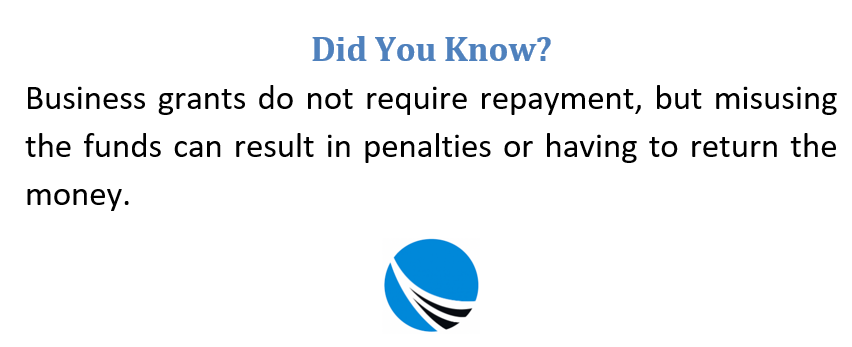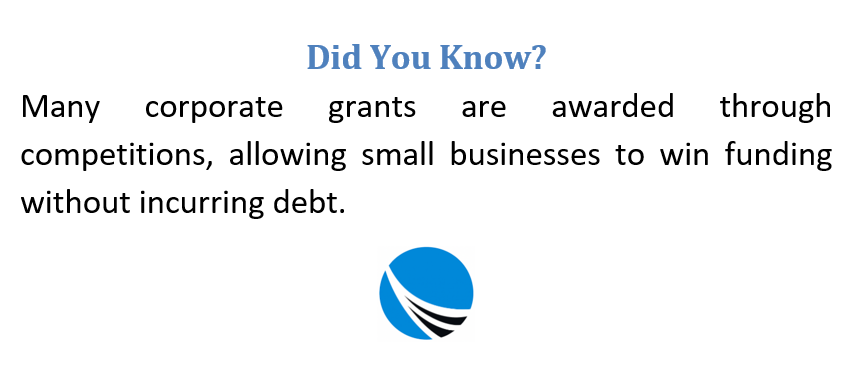Securing the right kind of financing is one of the most critical steps a business owner must take when launching or scaling operations. While there are numerous funding options available, two of the most commonly explored are business loans and business grants. Though both can supply essential capital, they operate in fundamentally different ways. Understanding these differences can help determine which option aligns better with your business goals, circumstances, and growth trajectory.

What Defines a Business Loan?
A business loan is a borrowed sum provided by a financial institution or lender to support various business activities. This money must be repaid over time with interest, typically through regular installments. Loans are accessible through banks, online lenders, credit unions, and even government-backed financial programs.
Businesses often use loans to fund initiatives such as launching operations, expanding facilities, covering payroll, purchasing inventory or machinery, or managing cash flow gaps. Depending on the nature and scale of the business, the repayment period may range from a few months to several years.
Common Types of Business Loans
Understanding the different loan categories can help you choose the best fit for your financial needs:
Business Line of Credit
A flexible borrowing arrangement that allows businesses to draw funds as needed up to a set limit. Interest is charged only on the amount used, similar to how credit cards function.
Equipment Financing
Tailored for the acquisition of tools, machinery, vehicles, or other assets essential to business operations. The asset often serves as collateral for the loan.
Invoice-Based Lending
Businesses can unlock early access to funds by borrowing against their outstanding invoices (invoice financing) or by selling them to a third party (invoice factoring).
Merchant Cash Advances
This option provides upfront capital based on projected future sales, especially credit card transactions. Repayment occurs via daily or weekly deductions from those sales, but this method usually involves steep costs.
Government-Backed Loans
Programs such as the SBA (Small Business Administration) loans offer competitive interest rates and extended repayment terms. While appealing, they often involve more stringent application processes.
Secured and Unsecured Loans
Secured loans require collateral such as real estate or equipment. Unsecured loans are issued based on creditworthiness alone but may carry higher interest rates due to the added risk for the lender.
Short-Term Loans
Ideal for businesses with immediate but temporary financing needs. These loans generally come with higher interest rates but can be funded quickly.
Term Loans
Provide a lump sum with a fixed repayment schedule. Commonly used for major purchases or projects with long-term benefits.

What Is a Business Grant?
Unlike a loan, a business grant is a financial award that does not require repayment. Grants are typically provided by government bodies, foundations, or private corporations. The objective is often to support businesses aligned with broader societal goals, such as economic development, innovation, or community impact.
However, grants come with strict eligibility criteria and usage restrictions. They’re not intended for general operational expenses or debt repayment. Instead, they are typically earmarked for specific projects or demographic groups, such as minority-owned businesses, women entrepreneurs, or environmentally focused ventures.
Categories of Business Grants
Grants can come from a variety of sources and serve a wide array of purposes:
Federal Grants
These are issued by agencies such as the Environmental Protection Agency (EPA), National Institutes of Health (NIH), and the National Science Foundation (NSF). They are highly competitive and require detailed applications and progress reporting.
State-Level Grants
Offered by state governments to support local business development, these grants may be slightly more accessible than federal options. Agencies such as state economic development boards often manage these programs.
Local Grants
Municipal or county programs may support specific initiatives like downtown revitalization, storefront improvement, or workforce development. Because of their localized scope, competition can be less intense.
Corporate-Sponsored Grants
Some companies provide funding to small businesses as part of their social responsibility efforts. Programs like the FedEx Small Business Grant or Visa’s initiative are examples.
Research and Development Grants
These are reserved for businesses in science and technology sectors aiming to develop new products, tools, or methods. Federal programs such as SBIR (Small Business Innovation Research) fall into this category.
Demographic-Specific Grants
Designed for businesses led by or serving underrepresented populations—such as Indigenous entrepreneurs, military veterans, or women—these grants focus on promoting inclusion and equitable access to funding.
Key Differences Between Grants and Loans
The primary difference between the two is repayment: loans must be repaid with interest, while grants are essentially free money provided you meet the grant’s terms. However, there are several other distinctions that matter just as much when evaluating your funding strategy.
Eligibility Requirements
Grants often demand that applicants fit a specific profile—be it industry, geographic location, or demographic group. They’re designed to advance particular missions or goals, such as innovation, inclusion, or sustainability.
Loans, on the other hand, are typically granted based on the borrower’s ability to repay. This includes considerations such as credit score, income history, and existing debt obligations.
Speed of Access
If you’re in urgent need of capital, loans are more practical. Many lenders can approve and disburse funds in a matter of days. Grants, by contrast, involve lengthy application processes and sometimes months of review before funds are released.
Flexibility of Use
Loans offer more leeway in how the money can be spent, provided the business uses it for legitimate operational or strategic purposes. Grants are bound by strict terms; misusing the funds can result in penalties or the requirement to return the money.
Risk and Obligation
Taking a loan introduces financial liability. Missed payments can harm your credit or result in asset seizure, depending on the loan’s terms. Grants don’t pose that financial risk, though they may come with other responsibilities, such as periodic progress reports or program evaluations.
Source of Funding
Grants are usually dispensed by public institutions or philanthropic organizations with specific policy goals. Loans come from financial institutions seeking a return on investment.
Choosing Between a Loan and a Grant
To decide which funding method fits your business best, consider the following steps:
Define the Funding Need
Are you launching a product, expanding facilities, hiring new staff, or conducting research? Your goal will shape the amount of funding required and whether it aligns better with the flexible use of loans or the targeted support of grants.
If the need is specific and aligns with a public or charitable mission, pursuing a grant may be worthwhile. If you’re seeking general expansion capital or working capital, a loan may be more suitable.
Assess Your Timeline
Determine how quickly you need the funds. If time is of the essence, applying for a loan will likely yield faster results. Grants are more suited to long-term projects or planned initiatives that don’t require immediate capital.
Consider Your Financial Standing
Your credit history, existing debt, and revenue trends play a major role in your loan eligibility. If your business is relatively new or lacks collateral, qualifying for a traditional loan may be difficult, steering you toward grant opportunities instead.
Conversely, businesses with strong credit profiles and predictable cash flow may find loans easier to secure and manage, especially if repayment terms are favorable.

Check Eligibility Criteria
Research eligibility requirements before spending time on applications. Ensure your business qualifies based on size, location, ownership structure, or project scope. Missing even one requirement can disqualify you from a grant or delay your loan approval.
Evaluate Your Comfort With Obligations
Grants might be “free,” but they often come with strings attached. You may need to provide reports, meet milestones, or undergo audits. Loans offer more freedom in exchange for financial responsibility.
Explore Alternatives
Don’t assume loans and grants are your only choices. Crowdfunding, angel investment, and venture capital can also provide funding—especially if you’re launching a unique product or have a passionate customer base. Peer-to-peer lending and hybrid financing models are also on the rise.
Final Thought: Align Funding With Strategy
The right financing route depends on your business’s unique circumstances, goals, and operational rhythm. Grants provide vital support without adding financial burdens, but they demand patience and exact alignment with the funder’s goals. Loans deliver quick capital with fewer restrictions on use, but they come with the responsibility of repayment and interest.
In many cases, businesses use a blend of both: grants for innovation or community impact initiatives and loans for operations, growth, or infrastructure. Each funding source has a role to play—your task is to determine when and how to use them effectively.
Let your strategic needs guide your decision, and don’t hesitate to consult with financial advisors, business mentors, or local small business development centers to craft a funding plan that aligns with your company’s vision.

